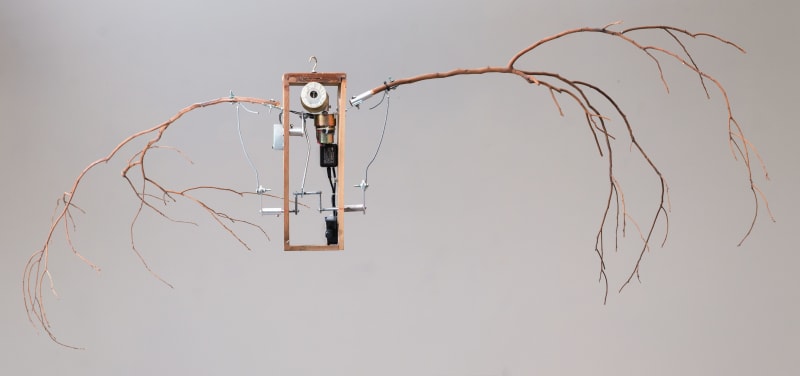Hsiao Sheng-Chien was born in Taiwan in 1968 and is currently living and working in Kaohsiung. He graduated from the Graduate Institute of Plastic Arts at Tainan National University of the Arts in 2001. Hsiao Sheng-Chien holds a profound position in the new media art in Taiwan with a very distinctive style. His works can be considered as a type of mobile art in terms of technology, but in terms of aesthetics, they are different from the initial development of European and American mobile art. At first glance, his works seem to have the characteristics of a mechanically powered device with an emphasis on dynamics, yet they are markedly different from kinetic art that simply emphasize dynamics and visual variability. The major difference lies in the artist's intentional use of materials in the construction of mechanical and combinatorial objects, which often present a naive and rough manualism. He also projects figurative emotions or symbolic metaphors for the objects in the language of contextual narratives. His works seem to have complicated mechanical structures, but they cannot hide the delicate temperature of human nature and his own humanistic nostalgia, which are filling the gap in people's hearts in the face of drastic environmental changes.
In 2003, Hsiao Sheng-Chien has awarded the Yageo Tech-Art Award by Yageo Foundation and Asian Cultural Council of Taiwan, and participated in artist residency programs at Location 1 gallery in New York. He won a Digital Art Awards by Digital Art Festival Taipei in 2014, and shortlisted for the Taishin Arts Award in 2005, Kaohsiung Awards in 2003 and 2000, and Taipei Art Awards in 2001. He has exhibited internationally including Orchestral Manoeuvres: See Sound. Feel Sound. Be Sound, ArtScience Museum, Singapore (2021); Höhenrausch Linz 2021 - Wie im Paradies, Linz, Austria (2021); Taipei Biennial, Taipei Fine Arts Museum, Taipei (2019); Kaohsiung Museum of Fine Arts, Kaohsiung (2018), and Footprints Into the Future, Palazzo delle Arti Napoli, Naples (2007). His work is in the public collections of Kaohsiung Museum of Fine Arts, Pingtung Art Museum, and Children's Museum of Art.
